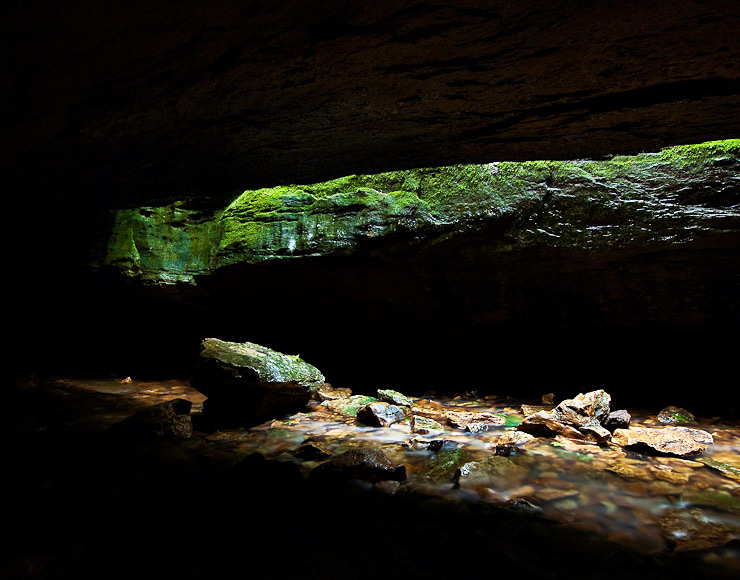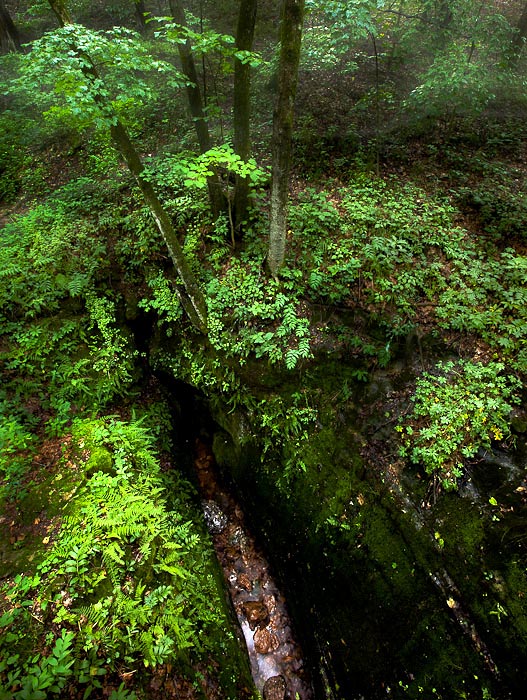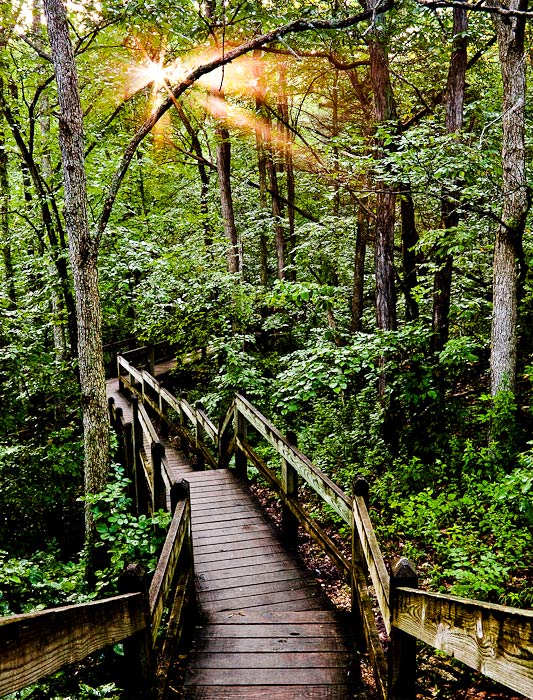
When I first looked into the opening of the Devil’s Ice Box, I wasn’t sure what would happen with a time exposure. There was barely enough light to focus on the rocks–I was lucky that all of the mist above caused by the hot, humid air hitting the cool air from the cave was creating a giant diffuser. Essentially, localized cloudy conditions on a sunny evening. I was surprised at the colors that were revealed in the first time exposure–I started at 30 seconds at ISO 800. I re-adjusted for a bulb exposure at ISO 400 for less noise. You can see this same sliver of stream passing underground through the cave system in the photo below:

